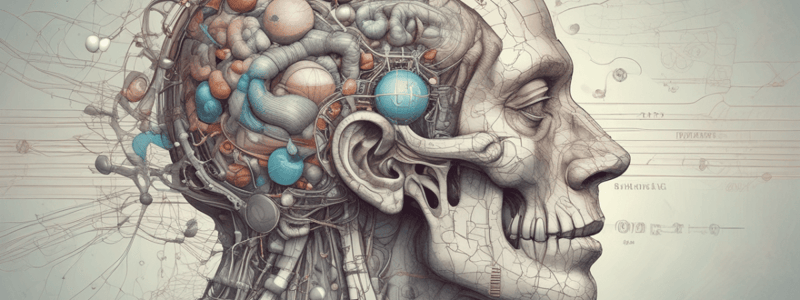Podcast
Questions and Answers
What is the typical time frame for acute dystonia to occur after starting a new medication or increasing the dose?
What is the typical time frame for acute dystonia to occur after starting a new medication or increasing the dose?
- Within 1-6 hours
- Within 1-2 months
- Within 1-2 weeks
- Within 12-48 hours (correct)
Which medication is given as a 50 mg injection to treat acute dystonia?
Which medication is given as a 50 mg injection to treat acute dystonia?
- Benztropine
- Clonazepam
- Valbenazine
- Diphenhydramine (correct)
What is the primary characteristic of tardive dyskinesia?
What is the primary characteristic of tardive dyskinesia?
- Breathing difficulties
- Painful muscle spasms
- Involuntary and repetitive movements of the mouth and face (correct)
- Psychiatric emergencies
How long must tardive dyskinesia symptoms persist after stopping the medication for diagnosis?
How long must tardive dyskinesia symptoms persist after stopping the medication for diagnosis?
What is one treatment option for tardive dyskinesia?
What is one treatment option for tardive dyskinesia?
What is the primary goal of treating acute dystonia?
What is the primary goal of treating acute dystonia?
Study Notes
Acute Dystonia
- Acute dystonia is a condition characterized by painful and scary muscle spasms, typically in the head and neck, which can also affect other parts of the body.
- It usually occurs within 12-48 hours of starting a new medication or increasing the dose.
- It mostly affects young men and can be a psychiatric emergency because it can affect breathing, though it is usually not fatal.
- Treatment involves a one-time dose of an antiparkinsonian agent with or without a muscle relaxant like Benztropine 2 mg or Diphenhydramine.
- Diphenhydramine is an antihistamine given as a 50 mg injection, which usually takes effect within 20-30 minutes.
- If the patient's tongue sticks out, they may need to be admitted to the hospital.
Tardive Dyskinesia (TD)
- Tardive dyskinesia is a movement disorder that can develop after using antipsychotic or other medications for a short or long time, or after stopping, changing, or reducing these medications.
- It involves involuntary and repetitive movements of the mouth and face, like chewing or grimacing, as well as rocking and tapping movements.
- Sometimes, it can also affect breathing or speech, though the patient may not be aware of it.
- For diagnosis, TD symptoms must persist for at least a month after stopping the medication.
- Treatment options include:
- Switching to a different medication like clozapine or olanzapine
- Using a medication that inhibits a specific transporter in the brain, for example Valbenazine or deutetrabenazine
- Using a medication like Clonazepam
Studying That Suits You
Use AI to generate personalized quizzes and flashcards to suit your learning preferences.
Description
Learn about acute dystonia, a condition causing painful muscle spasms, usually triggered by new medications or dosage increases. Understand its symptoms, treatment, and importance in psychiatric emergencies.




